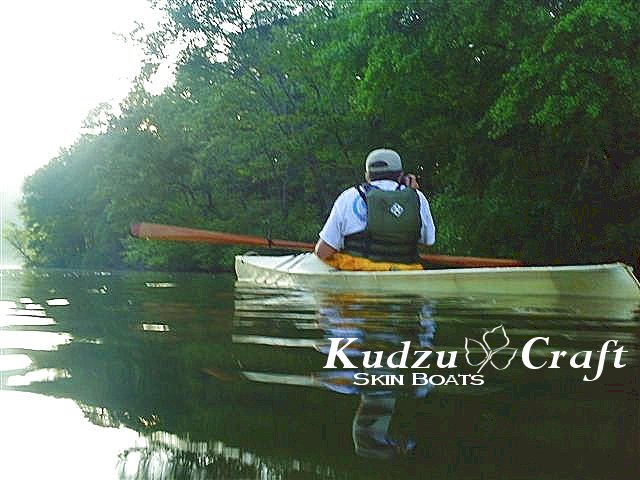
Curlew started out as a challenge by a friend to design a boat aimed at the typical paddler for use in our local waters, the Tennessee River and it’s man made lakes . Not many people actually camp out of their boat so we just wanted space behind the seat for a couple of dry bags and some water. Top speed was not an issue, again because most people paddle in the 2 to 3.5 mph range. As for water conditions while we have mostly flat water we can have very close spaced 3 foot waves in times of high wind. Using this information we set our design goals.
Once the design was finished, Curlew was 15 foot long and had an overall beam of 22″. I like to call it a fast cruiser because the hull was optimized for the 3 to 4.5 mph range, where most of us paddle most of the time.
The chosen design speed is how it ended up being 15 feet long. Any longer and the hull resistance went up at these speeds. Any shorter and it needed to be wider to keep the stability acceptable, which made resistance go up. The 15 foot length and 22″ width was the ‘sweet spot‘.

The Prototype Curlew * Photo compliments of David Dodd
We started with the notion that since this was a day boat all we needed was enough storage behind the seat for a couple of smaller dry bags. Something like food, emergency gear and maybe spare clothes. Since there are no water tight bulkheads it needs flotation bags. As the design evolved I peaked the rear deck to get the back band up a little higher and make easier access to the space behind the seat.
The prototype was launched mid April 2009 and the testing has gone extremely well. Curlew has lived up to my expectations. I have a found a few small items I wanted to change so I built Curlew II. The biggest change was a larger cockpit. I realized that most people couldn’t sit down and pull in their legs as it was. I also added some rocker to the hull to make it turn better and made a few cosmetic changes.
Once Curlew II was built what I realized there is more space, especially in the back of the boat than first thought. If you added a hatch there is room for camping gear. You could make your own float bags, seal it to hatch and store your gear inside the float bag. There isn’t the capacity for an extended trip but one or two nights should be no problem.
All these changes have been improvements. The boat responds very well to lean turns. Slight course corrections are quick and easy. There is more room in the cockpit and everyone that has paddled it so far has had good things to say.
All figures based on a 250 lb total displacement
Length over all * 15.0 ft. * Beam overall * 23″
Design draft 0.370 ft * Design displacement 250 lbs
Max displacement 300 lbs
STABILITY FACTOR = 93
RESISTANCE CHART

PHOTOS




CURLEW PROTOTYPE PHOTOS




Curlew Prototype

Curlew Prototype




